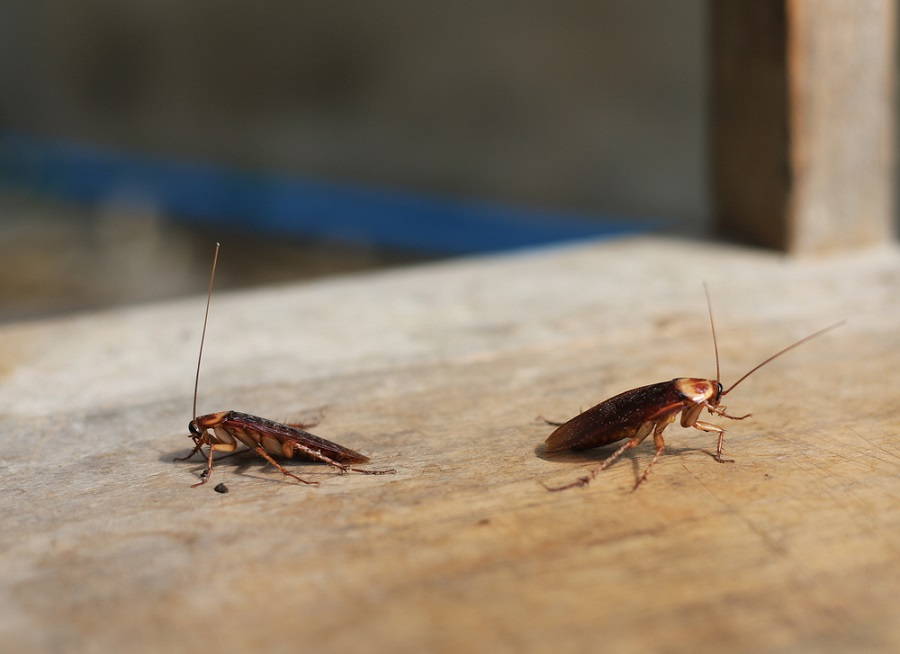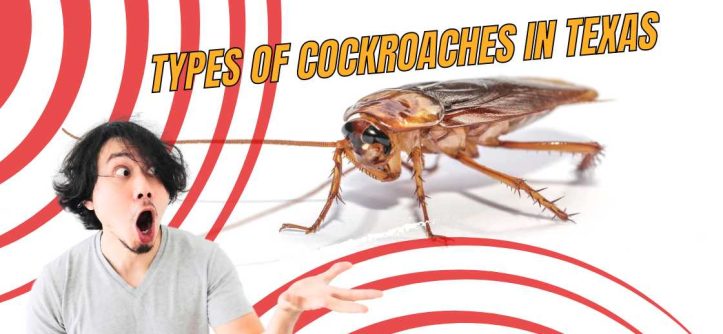Did you know that Texas is a hotspot for cockroach infestations? With its warm climate and abundant food sources, cockroaches thrive in this region. The most common types of cockroaches found in Texas include the German cockroach, American cockroach, and Oriental cockroach.
Welcome to Texas, where cockroaches thrive! In this article, we will explore the different types of cockroaches commonly found in Texas and discuss effective preventive measures to keep these pesky pests at bay. Understanding the Texas cockroach characteristics, habits, and health risks associated with each type of cockroach is crucial for maintaining a hygienic and healthy living environment. So let’s dive in and learn about these Texas cockroaches and how to prevent them from invading our homes.
Importance of Understanding the Types of Cockroaches in Texas

Cockroaches are unpleasant to encounter and pose significant risks to our health and hygiene. They can contaminate food, spread disease-causing bacteria and pathogens, trigger allergies, and exacerbate asthma symptoms. Therefore, identifying and differentiating between the various types of Texas cockroaches is essential for implementing targeted prevention strategies. By the way, have you heard about using coffee grounds to get rid of gnats in plants? It’s a natural and effective solution that many people swear by. Here are the reasons why understanding the types of cockroaches in Texas is crucial:
- Identification: Different species of cockroaches have distinct characteristics and habits. Knowing the specific types of cockroaches in Texas allows homeowners, pest control professionals, and researchers to identify them accurately.
- Health Risks: Cockroaches are known carriers of pathogens that can cause diseases in humans. They can contaminate food, utensils, and surfaces with bacteria, viruses, and allergens.
- Pest Control Strategies: Each cockroach species may require different control methods due to variations in behavior, biology, and preferred habitats. By recognizing the types of cockroaches in Texas, pest control professionals can choose the most effective treatments and prevention techniques.
- Ecological Impact: Cockroaches play important roles in the ecosystem, but their presence indoors can disrupt the balance. Understanding the types of cockroaches in Texas helps distinguish between native species and invasive ones.
- Public Awareness: Educating the public about the types of cockroaches in Texas raises awareness about potential health risks and prevention methods.
The Impact of Cockroaches on Health and Hygiene
Cockroaches are known carriers of bacteria such as Salmonella and E. coli, which can cause food poisoning and gastrointestinal illnesses in humans. Additionally, their shed skin, droppings, and saliva can trigger allergic reactions and asthma attacks in susceptible individuals. Maintaining a cockroach-free environment is crucial for safeguarding our health and promoting good hygiene practices.
American Cockroach (Periplaneta americana)
The American Texas cockroach is the largest roach species commonly found in Texas. It has a reddish-brown coloration, measures around 1.5 to 2 inches, and possesses distinctive long antennae and wings.
American cockroaches prefer warm and humid environments, making Texas an ideal habitat. They are commonly found in basements, kitchens, sewers, and other damp areas. These cockroaches are fast runners and are capable of flying short distances.
American cockroaches can spread diseases, contaminate food, and trigger allergies and asthma. They also emit a foul odor, leave behind droppings, and shed skin.
Prevention Tips
- Seal cracks and crevices: Inspect your home for openings and seal them with caulk or weatherstripping to prevent cockroach entry.
- Keep the kitchen clean and free of food debris: Wipe down countertops, wash dishes promptly, and store food in airtight containers.
- Regularly empty trash cans: Dispose of garbage regularly and ensure trash cans have tightly sealed lids.
German Cockroach (Blattella germanica)
The German cockroach is a small species, typically measuring about 0.5 to 0.6 inches long. It has a light brown to tan color and is known for the two dark parallel stripes on its back.
German cockroaches are prolific breeders and can infest homes rapidly. They are commonly found in kitchens, bathrooms, and other areas with access to food, water, and warmth. These roaches prefer dark and secluded spaces.
German cockroaches can contaminate food, utensils, and food preparation surfaces with their droppings and regurgitated substances. They can also trigger allergies and asthma symptoms.
Prevention Tips
- Maintain proper sanitation: Keep your living spaces clean and free of food debris, as these roaches are attracted to accessible food sources.
- Fix leaky pipes and faucets: Eliminate sources of standing water, as German cockroaches require water for survival.
- Store food in airtight containers: Prevent access to food by storing it in tightly sealed containers.
Oriental Cockroach (Blatta orientalis)
Oriental cockroaches are dark brown or black and have a glossy appearance. The females are about 1 to 1.25 inches long, while the males are slightly smaller.
These Texas cockroaches prefer cool and damp areas like basements, crawl spaces, and drains. They move slower than other species and are less likely to climb vertical surfaces.
Oriental cockroaches can contaminate food and surfaces, emit an unpleasant odor, and trigger allergies. They are also associated with asthma symptoms.
Prevention Tips
- Keep basements and crawl spaces dry: Use dehumidifiers or fans to reduce moisture levels in these areas.
- Eliminate excess moisture in the house: Fix leaks and improve ventilation to prevent moisture buildup.
- Remove clutter and debris: Cockroaches can find shelter in cluttered spaces, so keep your living areas organized and clean.
Smokybrown Cockroach (Periplaneta fuliginosa)
Smoky brown cockroaches are medium to large, 1 to 1.5 inches long. They have a uniform mahogany-brown color and long wings that extend beyond their abdomen.
These Texas cockroaches prefer outdoor habitats but may enter homes for food and shelter. They are commonly found in attics, crawl spaces, and areas with abundant foliage.
Smoky brown cockroaches can contaminate food, trigger allergies, and emit a strong odor. They are also attracted to light sources and may swarm around outdoor lighting fixtures.
Prevention Tips
- Ensure proper ventilation in attics and crawl spaces: Adequate airflow helps reduce humidity levels, making these areas less attractive to cockroaches.
- Use weatherstripping to seal gaps around doors and windows: Prevent cockroach entry by sealing any openings in your home.
- Trim trees and shrubs away from the house: Keep branches and vegetation away from the exterior of your home to eliminate potential entry points.
Brown-banded Cockroach (Supella longipalpa)
Brown-banded cockroaches are small, measuring around 0.5 to 0.6 inches in length. They have a light brown or tan color and distinctive light bands across their wings and abdomen.
These cockroaches prefer warm and dry environments. They are often found in upper cabinets, behind picture frames, and in other secluded areas.
Brown-banded Texas roaches can contaminate food, trigger allergies, and leave behind droppings. They are known to infest electrical appliances and can cause short circuits.
Prevention Tips
- Inspect and seal cracks in walls and ceilings: Pay attention to areas where these roaches might enter your home.
- Declutter and organize storage areas: Reduce hiding spots by keeping storage areas tidy and organized.
- Regularly vacuum and clean carpets: Eliminate food particles and debris that may attract cockroaches.
Turkestan Cockroach (Blatta lateralis)
Turkestan cockroaches are medium-sized, measuring about 0.8 to 1.1 inches in length. They have a dark brown color and are known for the cream-colored bands across their pronotum.
These roaches are primarily outdoor dwellers commonly found in gardens, flower beds, and mulch. However, they can also enter homes through gaps and cracks.
I’ve heard that there are quite a few roaches in Texas. While Turkestan cockroaches do not pose significant health risks, they can still contaminate food and trigger allergies in sensitive individuals.
Prevention Tips
- Seal gaps around windows and doors: Prevent entry by ensuring tight seals and eliminating potential entry points.
- Remove outdoor clutter and debris: Keep your yard tidy and free of excess vegetation or debris that could attract these roaches.
- Use screens on vents and openings: Install screens on vents and openings to prevent cockroach entry while still allowing airflow.
Preventing Cockroaches in General

Maintaining cleanliness and good hygiene practices is crucial for preventing cockroach infestations. Regular cleaning and proper sanitation can significantly reduce the risk of attracting these pests. Here are the common prevention practices:
- Regularly clean and sanitize the house: Wipe down surfaces, sweep, and vacuum regularly to eliminate food crumbs and potential hiding spots.
- Eliminate standing water sources: Fix leaks, remove standing water, and ensure proper drainage to remove water sources that may attract cockroaches.
- Properly store food and garbage: Store food in airtight containers and dispose of garbage in tightly sealed bins.
- Maintain a clutter-free environment: Reduce clutter to minimize hiding places for cockroaches.
- Seal entry points and cracks: Inspect your home for any gaps or cracks and seal them to prevent cockroach entry.
Natural Cockroach Control Methods
Certain essential oils and herbs, such as peppermint, lavender, and bay leaves, are the best to repel texas roaches. Use these natural remedies strategically in areas where cockroaches are likely to enter.
DIY cockroach traps and baits can be effective in reducing roach populations. Simple traps can be made using a jar with a sticky or soapy substance inside, while baits can be created using boric acid mixed with a food attractant.
Introducing natural predators, such as certain species of wasps or geckos, can help control cockroach populations. However, it’s important to consider the potential impacts on the local ecosystem before implementing this method.
Non-toxic sprays and repellents made from ingredients like vinegar, citrus oils, or diatomaceous earth can be used to repel and deter cockroaches. These natural solutions are safer for humans and pets compared to chemical pesticides.
Professional Texas Cockroach Extermination
If a cockroach infestation persists or becomes too severe to manage on your own, seeking professional pest control services may be necessary. Professional exterminators have the expertise and tools to eliminate cockroaches from your home effectively.
When selecting a pest control company, ensure they are licensed, experienced and use safe and environmentally-friendly methods. Read reviews, ask for recommendations, and compare prices and services to make an informed decision.
During professional cockroach extermination, the pest control experts will assess the extent of the infestation, identify the type of cockroach species present, and develop a tailored treatment plan. This may involve using targeted insecticides, baits, or traps to eradicate cockroaches and prevent future infestations.
Conclusion
Understanding the different types of Texas cockroach is vital for effective prevention and control. By familiarizing yourself with their appearances, habits, and associated health risks, you can take proactive measures to keep these unwanted guests out of your home.
When it comes to dealing with roaches in Texas, maintaining cleanliness, proper sanitation, and implementing preventive practices such as sealing entry points, eliminating food sources, and reducing moisture will go a long way. Additionally, exploring natural control methods, considering professional extermination when necessary, and practicing good hygiene will help create a roach-free environment.
Remember, the battle against Texas cockroaches is an ongoing one. Still, with knowledge and consistent efforts, you can protect your home and promote a healthier living space for you and your family.
FAQs (Frequently Asked Questions)
- Are cockroaches harmful to human health?
Cockroaches can pose health risks as they carry and spread bacteria, contaminate food, and trigger allergies and asthma symptoms.
- How can I prevent Texas roaches from entering my home?
To prevent Texas roaches, seal cracks and crevices, keep your kitchen clean, regularly empty trash cans, maintain proper sanitation, fix leaks, store food in airtight containers, and eliminate clutter.
- Can natural remedies effectively repel cockroaches?
Certain natural remedies like essential oils, herbs, traps, and baits can help repel and control cockroach populations. However, their effectiveness may vary, and severe infestations require professional assistance.
- When should I consider hiring a professional pest control company?
If you have a persistent or severe cockroach infestation that DIY methods haven’t resolved, it’s advisable to seek professional help. Exterminators have the expertise and resources to eliminate the infestation effectively.
- How can I choose a reputable pest control company?
When choosing a pest control company, ensure they are licensed, experienced, use safe methods, and have positive customer reviews. Obtain multiple quotes, compare services, and consider their commitment to eco-friendly practices.
Tags: cockroaches prevention, texas cockroaches



